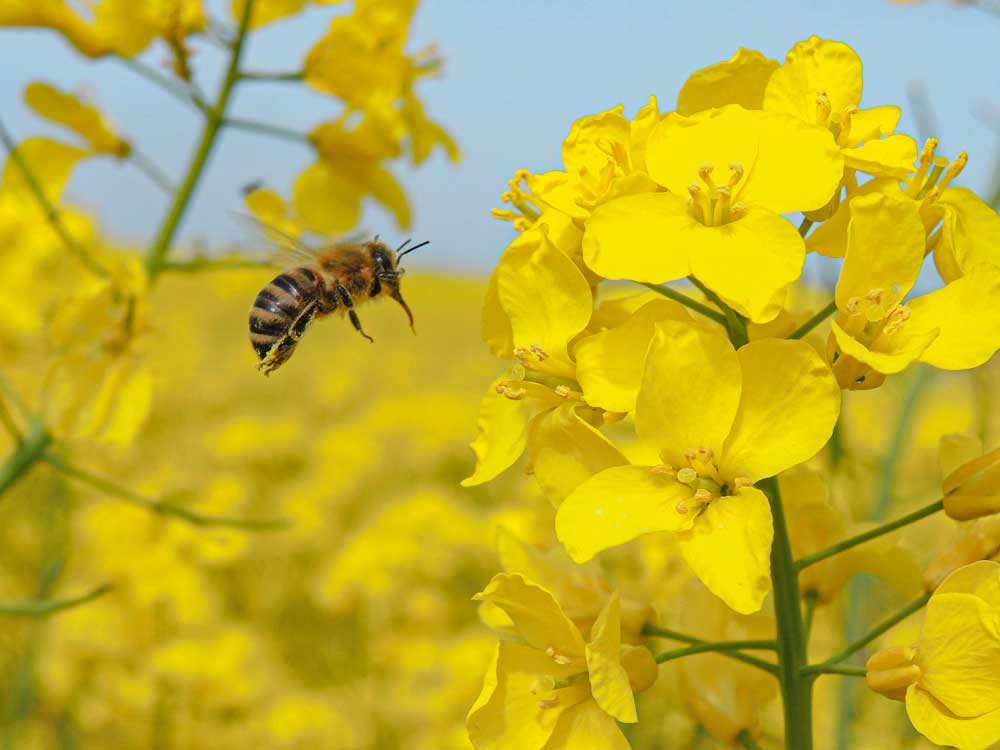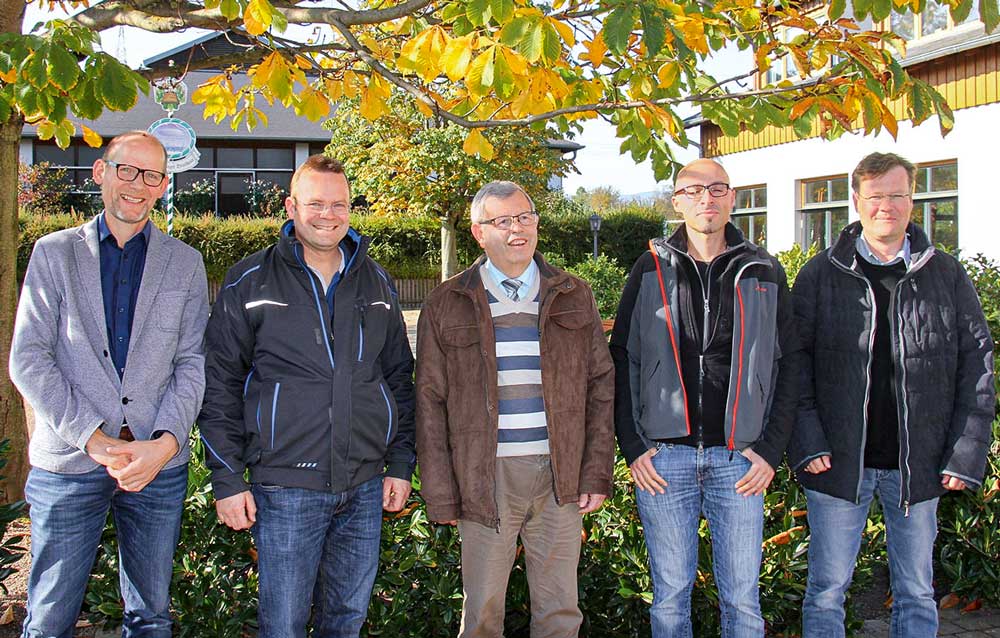Bees need oilseed rape
By Dr Doris Ahlers
... and rape growers the bees as pollinators. All of which means farmers and beekeepers work together in increasing harmony nowadays.
New crop pests, dry growing seasons, a shrinking range of available sprays in the face of increasing plant resistances: all spoil the fun of growing oilseed rape nowadays. Where Germany had 1.5 m ha of rape growing in the crop’s heyday, only 880 500 ha were drilled in 2019. And less oilseed rape means bees must seek out new and alternative food sources, possibly only available farther away from their hives. What particularly professional beekeepers want to know is: how can enough nutrition be ensured? And what farmers might ask is: how can we explain our use of insecticides to beekeepers who already very critical of this practice? What’s more, what can we do better in this respect?
Promoting understanding
Granted, there’s wide variation in types of beekeepers, although there are still plenty with a very professional approach to business and working with agriculture, points out Christian Dreher from the Hessian Bee Institute. However, a »not insignificant« group comprise those who are very emotional, badly informed and in total denial. It could well be that this attitude has something to do with their own unsuccessful varroa reduction attempts, reckons Stephan Brand, advisor with the state agricultural education and advisory organisation LLH.
»In the past, there’s been lack of understanding on both sides and mainly considerable scepticism on the part of beekeepers as to whether there was even the possibility of discussions«, confirms Manfred Ritz from the Hessian Beekeepers Association. For some years now, efforts have been made to arrange constructive meetings with get-togethers organised in the field some days before rape flowering for objective discussions on the theme crop treatments at flowering. »Some beekeepers came with their fists already balled in their pockets. But the specialist advisers involved, and the Bee Institute, reported that there quickly developed a harmonious exchange of opinions and constructive dialogue with farmers«, recalls Ritz. In general, the beekeepers understand that a reduction in oilseed rape area leads to substantial penalties in honey yields. Currently in Hessia there are 62 000 occupied hives, double the total of 30 years ago. This works out at around three colonies /km 2. The importance of oilseed rape is also underlined by these rough figures: 1% of Hessian farmland comprises flowering strips/areas. On 2% grows grain legumes and 3% forage legumes. In the 2019 harvest only 5% was down to oilseed rape.
What farmers can do
With oilseed rape, pollination by bees brings a yield increase of up to 20% and additionally encourages more rapid and uniform ripening. »Every farmer growing rape should not only be aware of this, but also try to encourage establishment of many honey bee hives in the vicinity. After all, these are the ideal pollination partners«, emphasises Christian Dreher. In addition to observing bee protection legislation, farmers could also show more willingness to cooperate with beekeepers, e.g. by carrying out crop treatments, even with sprays not harmful to bees, in the evenings if possible, when bee flights have ended. As a rule, pollen and nectar has by then been collected. The sprayed active material then has time overnight to be absorbed into the plants or become fixed on the surface. As a rule, bees can then begin again with pollen collection the next day. Also, it’s always advisable to give beekeepers notice of a treatment so that the colonies can be shut in their hives.
Technical solutions
Direct contact between bees and plant protection substances can be prevented if the rape flowers are treated with B4 preparations after bee daytime activity. If fungicide is applied with drop leg nozzles on the sprayer, this allows a good combination of plant pest control and bee protection. »In Hessia, we’ve had very good experience with this technique in large scale on-farm trials. According to tests by the University of Hohenheim, residue levels are substantially lower in this respect«, says the plant protection consultant Dr Dominik Dicke from Giessen.
With the low-down nozzles, the spray active ingredient is applied under the flower canopy and there is especially effective against sclerotinia, just where the fungal spores force their way into the tissue, so that pollinators scarcely come into contact with the substance and are therefore protected. Farmers and beekeepers would welcome it if this technique could be added into the state support scheme over and above any start-up financing, in order to encourage investment in improved bee protection.
A diversion for the bees
But beekeepers, too, have rules that should be followed, observes beekeeping spokesperson Ritz. To these belong, for instance, the positioning of drinking water facilities near the hives to keep bees from flying into freshly sprayed crops. Often, small natural waterways are too far away, so that the newly sprayed crop areas attract first before the more distant water sources. Such drinking water points should be positioned at least 17 m from the hive, 20 – 25 m being even better, adds Christian Dreher.
How are wild bees doing?
Nowadays, public discussions on bee protection are often focussed more on wild bees than on honey bees. These insects are highly specialised and often do not find the foods on offer that they really want because the respective plants are no longer present, are not cultivated anymore or, because of the limited scavenging area of the bees, are too difficult to reach. Here, more biodiversity is the solution. »Certainly, there is willingness amongst farmers to voluntarily establish strips of flowering plants«, agrees farmer Stefan Wagner from Kronenhof in Bad Homburg. He himself does more than is requested by the state greening requirements on his mainly organic farmland. Such flowering strips are regularly a magnet for a myriad of insects, including bees. Less attractive, however, is the often inflexible bureaucracy behind the programme. For instance, a minimum husbandry input is required by the state in the management of these strips (mowing, mulching and/or removal of cut material). Not until he explained that removed along with the cut vegetation would also be insect eggs that are so urgently needed for continuation of new populations, was then he permitted to discard this part of the programme.
And what about the organic farming aspect? As far as providing the high honey yields wanted by beekeepers, the organic solution is not too helpful as, in such fields, very little oilseed rape is grown.
Summary
The key to success is respectful cooperation between farmers and beekeepers. Oilseed rape plays an important role here, but also the establishment of flowering strips. If in summer there is sufficient nutrition on offer, this is immediately reflected in bee numbers.




